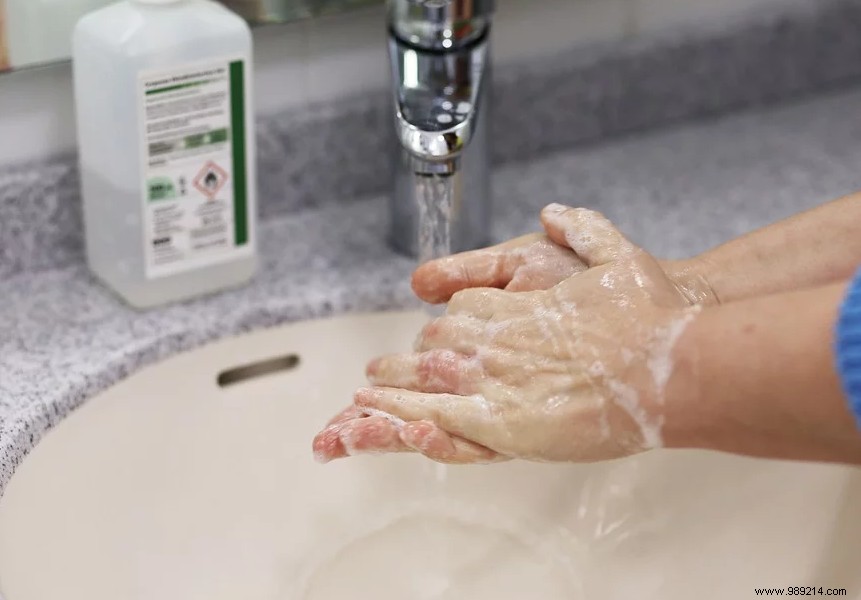Washing your hands well (regularly and effectively) is one of the most important hygiene measures in the prevention of the Covid-19 coronavirus. If soap is a good way to destroy the virus, hydroalcoholic gels are also very effective. These two products go about it differently but ultimately achieve the same goal.
Since the start of the Covid-19 epidemic, the need to wash your hands has been very often reminded. Not only is it the dirtiest part of the body, but above all the risk of contamination is high . By touching an infected surface before bringing your hands to your face, the coronavirus can enter the body and more specifically the respiratory tract.
About a month ago, we were talking about the advice of Michelle Sconce Massaquoi, doctoral student in microbiology at the University of Oregon (United States). The person concerned indicated two strategies :washing with soap or using products containing an antibacterial agent (hydroalcoholic gels).
Let's remember in passing the protocol to follow for hand washing with soap:
– Wet hands thoroughly with clean water
– Apply soap and rub all corners of hands (palms, back, nails, up to wrists) for 30 seconds
– Rinse hands with clean water
– Dry hands with a clean paper towel (or air dry)

Let's first remember that the Covid-19 coronavirus is a few tens of nanometers wide. This one is made up of several ingredients :advanced proteins capable of infecting our cells and a protective lipid membrane containing the viral genetic material.
You should know that the membrane of the coronavirus is made up of molecules whose bond between them is weak. In contact with water, the latter stick to each other in order to repel it. Then comes the soap containing chemically related surfactants virus membrane molecules. A competition between the molecules ensues, leading to the destruction of the membrane.
In the case of alcohol, it is capable of destroying spike proteins of the virus while weakening the cohesion of the membrane. Only one condition to respect:that alcohol is present at least 60% in the liquid used.
Source